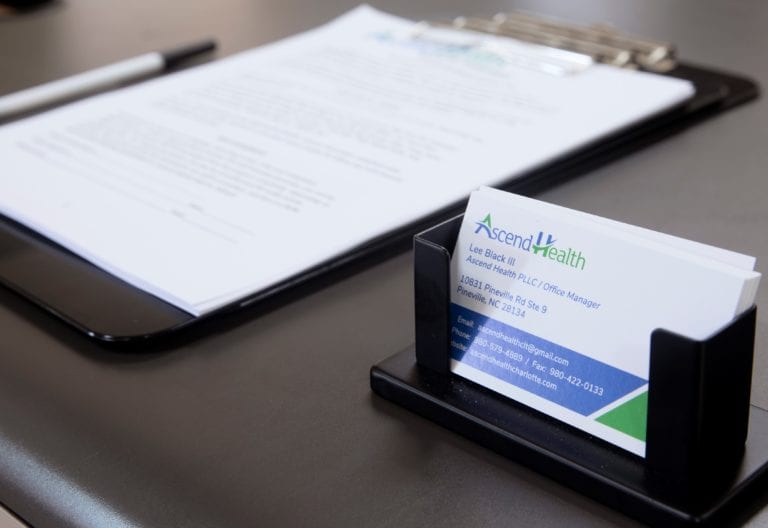Telehealth relapse prevention MAT programs combine medication-assisted treatment with remote care, offering you ongoing support as you transition from detox or inpatient rehab to outpatient recovery. With tailored treatment programs delivered online, you can engage in individual therapy, group counseling, and medication management from the comfort of your own home. This approach fosters a supportive environment, reduces barriers to care, and empowers you to build a strong foundation for long-term recovery.
In this article, you’ll learn how telehealth services elevate relapse prevention strategies, explore options like Suboxone and Sublocade treatments, navigate insurance considerations, and discover tips to maximize your success. Whether you’re looking for a telehealth suboxone maintenance program or comprehensive aftercare, understanding your options will help you make informed decisions and maintain progress on your recovery journey.
Understand relapse prevention MAT
Medication-assisted treatment, or MAT, pairs FDA-approved medications such as buprenorphine (Suboxone) or extended-release injections like Sublocade with counseling and behavioral therapies. When delivered through telehealth, MAT becomes more accessible and flexible, addressing unique challenges you may face after completing inpatient detox or rehab.
What is medication-assisted treatment
MAT is recognized as the gold standard for treating opioid use disorder by major health authorities, including the CDC, NIH, SAMHSA, and the American Medical Association [1]. By targeting physical cravings and withdrawal symptoms, medications such as methadone, buprenorphine, or naltrexone stabilize brain chemistry and reduce the risk of relapse. Behavioral interventions, like cognitive behavioral therapy (CBT), address psychological triggers and teach coping strategies for managing high-risk situations.
Role of telehealth in MAT
Telehealth platforms remove geographical barriers and allow you to connect with a care team no matter where you live. Virtual sessions can include:
- Remote prescribing of medications like Suboxone or Sublocade
- Scheduled video visits to adjust dosing and address side effects
- Secure messaging with therapists and support staff
- Digital tools to track your recovery goals and progress [2]
Studies show that tele-MOUD (telehealth for medication-assisted treatment of opioid use disorder) has retention and abstinence rates comparable or superior to in-person care, especially when flexibility and convenience align with your lifestyle [3].
Explore telehealth suboxone programs
Suboxone, a combination of buprenorphine and naloxone, is a cornerstone of MAT and works by reducing cravings without producing a “high.” Telehealth Suboxone programs extend the reach of outpatient care, making it easier to maintain your prescription and monitor your progress.
Suboxone maintenance therapy outpatient program
A structured suboxone maintenance therapy outpatient program typically includes:
- An initial virtual assessment and medical history review
- Regular video visits to adjust dosing and address side effects
- Access to counseling sessions for relapse prevention strategies
- Ongoing support through secure messaging and check-ins
By combining medication management with behavioral therapies through telemedicine, you maintain continuity of care without travel constraints.
Aftercare suboxone treatment program
Aftercare is a critical phase in your recovery continuum. Telehealth aftercare offers:
- Weekly or biweekly counseling sessions focused on coping skills and stress management
- Group therapy via video conference to connect with peers on similar journeys
- Digital relapse prevention resources and educational materials [4]
Consistent engagement during aftercare can reduce relapse risk by up to 90% over two years of treatment [1].
Telehealth suboxone maintenance program
With a telehealth suboxone maintenance program, you can:
- Set up flexible appointments around work or family obligations
- Order medications through partnered pharmacies for home delivery
- Receive reminders for appointments and medication refills
- Use mobile apps to log daily doses and mood indicators
This level of structure and accountability helps you stay on track while lessening the stigma associated with visiting a clinic.
Consider Sublocade treatment options
If daily dosing presents a challenge, extended-release injectable formulations like Sublocade provide a monthly alternative. By delivering a steady level of buprenorphine, Sublocade can simplify your regimen and reduce the chance of missed doses.
Sublocade treatment with insurance coverage
Most major insurance plans and Medicaid programs cover sublocade treatment with insurance coverage, often requiring a combination of telehealth consultations and in-person injections at a local clinic. Key benefits include:
- Monthly injections with minimal day-to-day decision making
- Steady medication levels to prevent withdrawal peaks
- Reduced diversion risk compared to take-home doses
Before beginning a Sublocade regimen, you’ll undergo an induction phase with buprenorphine tablets or film. Once stabilized, you transition to monthly injections under telehealth supervision and local administration.
Outpatient buprenorphine treatment program
Whether you choose Sublocade or daily buprenorphine, an outpatient buprenorphine treatment program offers:
- Virtual medical visits to monitor vitals and labs
- Coordination with local labs for required screenings
- Counseling, peer groups, and family therapy via teleconference [5]
- Close oversight to adjust treatment in response to life changes
This comprehensive care model empowers you with an individualized plan and the support necessary for lasting recovery.
Manage insurance and costs
Navigating insurance can feel overwhelming, but many telehealth MAT services are covered at rates similar to in-person care. Understanding your benefits helps you focus on recovery instead of finances.
Medicaid coverage for telehealth MAT
Medicaid expansions under the Affordable Care Act have improved access to MAT, covering:
- Inpatient and outpatient services
- Medication-assisted treatment medications and detox services
- Counseling and behavioral therapies
Research shows Medicaid coverage can lower healthcare costs by approximately 30% for people with substance use disorders [6]. If you qualify, an outpatient opioid program that takes medicaid may provide comprehensive care with minimal out-of-pocket expenses.
Insurance covered outpatient recovery program
Many private plans now include telehealth addiction treatment. Check if your policy offers:
- Parity for telehealth visits
- Coverage for virtual MAT services
- Family therapy and group sessions
A fully insurance covered outpatient recovery program can bundle medical appointments, counseling, and medication costs into a predictable copay structure.
Affordable Suboxone treatment
Even if you’re uninsured or underinsured, options exist:
- Sliding scale telehealth clinics
- Assistance programs from manufacturers of buprenorphine products
- Community health centers offering MAT
Connecting with a provider that offers affordable suboxone treatment for addiction ensures you can continue your medication-assisted recovery without financial strain.
Implement MAT success strategies
Your active participation makes a significant difference in preventing relapse and maintaining progress. Incorporate these strategies into your telehealth MAT program.
Set clear recovery goals
Define measurable targets, such as:
- Attending all scheduled telehealth appointments
- Completing weekly therapy assignments
- Reaching sobriety milestones (30 days, 90 days, 1 year)
Use telemedicine tools to track progress and adjust goals as needed.
Stay accountable and connected
Engage regularly with your care team:
- Respond promptly to messages
- Join peer support groups for shared experiences
- Invite family members to participate in virtual sessions
This network forms a supportive environment that reinforces healthy behaviors and motivates you during challenging moments.
Prepare for telehealth sessions
Optimize your virtual appointments by:
- Finding a private, distraction-free space
- Testing your device and internet connection
- Having a list of questions or concerns ready
- Logging your medication use and side effects in advance
Being prepared ensures you make the most of each interaction and receive timely guidance.
Measure your recovery progress
Regularly assessing your recovery journey enables you and your care team to identify successes and address emerging challenges before they lead to relapse.
Track goals and milestones
- Visual charts for sobriety days
- Journals to record cravings and triggers
- App-based badges or reminders for medication adherence
These tools reinforce accountability and highlight improvements over time.
Recognize warning signs
Early intervention is key. Common indicators of relapse risk include:
- Increased stress or anxiety
- Isolation from support networks
- Irregular medication use
If you notice red flags, contact your provider immediately to adjust your plan.
Adjust treatment plans
Recovery is not one-size-fits-all. Through telehealth:
- Your provider can modify medication doses
- Introduce new therapies, such as trauma-informed CBT
- Add or remove support services based on your needs
This individualized plan fosters comprehensive care tailored to your evolving situation.
Choose next recovery steps
As you build momentum, consider additional resources that align with your recovery goals and personal circumstances.
Explore specialized programs
If you require targeted services, look into:
- A veteran opioid treatment program that addresses military-specific trauma
- A dual diagnosis mat program for co-occurring mental health conditions
- An outpatient opioid rehab with suboxone offering blended in-person and virtual care
Find ongoing support
- Maintain ties with local peer recovery groups
- Seek family therapy sessions for relationship rebuilding
- Attend virtual workshops on stress management and relapse prevention
Engaging with a community strengthens your resilience and fosters lasting change.
Commit to your recovery continuum
Your journey doesn’t end with one program. Embrace the principles of progress, not perfection, and view each step as an opportunity for growth [7]. By combining medication management, behavioral therapy, and peer support through telehealth, you create a recovery continuum that empowers you to maintain your sobriety over the long term.
In telehealth relapse prevention MAT, you hold the tools and support needed for sustained transformation. Take the next step today by contacting a qualified provider and enrolling in a program that fits your life, your needs, and your recovery goals.



